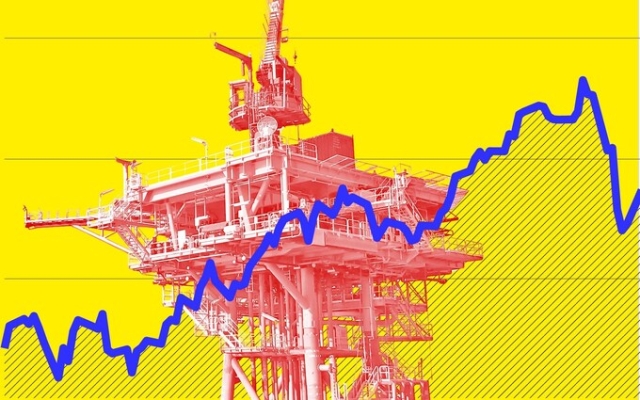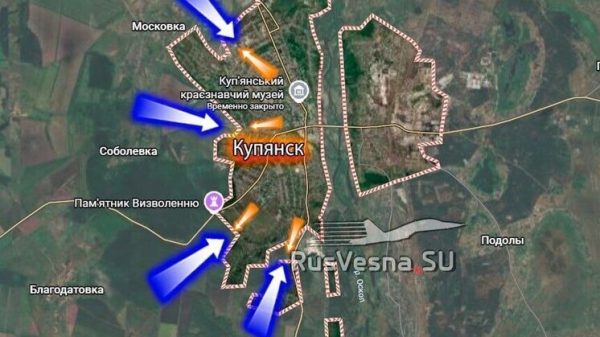
The conflict in the Middle East has long led to rising oil prices. The Yom Kippur War between Israel and a coalition of Arab states in 1973 triggered an oil embargo that caused prices to nearly quadruple in a year. The oil shock drove up inflation and contributed to a lost decade.
Now Hamas' brutal attack on Israel has raised fears of a new energy crisis.
“This month marks the 50th anniversary. after the 1973 oil shock,” Deutsche Bank analysts wrote in a note sent to clients on Monday.
“Is history repeating itself in the 2020s?”
Although price movements are relatively subdued for now, with oil prices still below where they were two weeks ago, the atmosphere is feverish and markets are closely watching for signs that the conflict in the region could escalate into a broader fuel shock.
“The market is not yet pricing in these risks,” said Caroline Bain, chief commodities economist at Capital Economics.
“But it is fair to say that as long as this conflict continues, and there is speculation that Israel is preparing for a longer conflict, we can expect a higher risk premium in the price of oil in the future. »
Israel is not itself an oil exporter, but the region is critical to global supplies, and the conflict raises three key questions: what happens to Iranian oil?; How will Saudi Arabia react?; and will supplies from and through the region be disrupted?
“The big one is Iran,” says Bain.
Although Iranian oil is already under US sanctions, enforcement has been looser under President Joe Biden, and Iran is now ramping up production . year.
However, the Hamas attacks have undermined the rapprochement between the US and Iran, with speculation that Washington and its allies will now tighten sanctions on Tehran.
Iran has already publicly praised the terrorists, and there are unverified reports that the Revolutionary Guards were helping Hamas plan attacks.
The impact of tightening sanctions on Iran would be significant for oil prices.
«If Iran returns to production at the same level as last year, about 1% of the world's oil reserves will disappear, and the starting point is that we are already short of oil,» says Bain.
Tehran increased oil production. Production has increased by nearly 500,000 barrels a day over the past year, according to the International Energy Agency. Other estimates put production up by as much as 700,000 barrels per day.
Most Iranian oil is sold to China, but this has an impact on world prices because it is a commodity.
Bane says: “Throughout this year, we have seen the US ignore production increases in Iran, apparently because the US is seeking to control oil prices.”
«But these latest developments will make it much harder to ignore the fact that Iran is evading sanctions. So, as a result of this, we may see a decline in supplies from Iran.»
According to Goldman Sachs, the price of Brent crude oil will rise by $1 for every 100,000 barrels of Iranian oil withdrawn from the global market daily. .
The second and related concern is how Saudi Arabia and its OPEC allies will respond to the conflict.
Saudi Arabia and Russia have already cut global exports this year in an attempt to support oil prices.
p>
On Friday, the day before Hamas launched its attack, the Wall Street Journal reported that Saudi Arabia had told the White House it was ready to increase oil production early next year.
It was a gesture of goodwill aimed at facilitating negotiations on a defense agreement with Washington.
The deal, which would include U.S. security guarantees, arms sales and help building a civilian nuclear program, was contingent on Saudi Arabia recognizing Israeli sovereignty, something it has never done since the country was founded in 1948.< /p>
However, the war between Israel and Hamas threatens to derail these diplomatic efforts and could also mean that OPEC cuts will drag on for a long time.
In a note to investors, Daan Struven, head of oil research at Goldman Sachs, said: «In our view, the escalation of the conflict in the Gaza Strip reduces the likelihood of a near-term normalization of Saudi-Israeli relations.»
As a result, “events this weekend reduce the likelihood of an early end to Saudi Arabia's production cuts.”
Goldman now expects Brent crude prices to rise from $85 a barrel last week. to $100 by June next year and could rise to $104.
Higher wholesale prices typically reach the pump within a month, meaning motorists could be paying up to a fifth more for petrol and diesel by July.
Even if Saudi Arabia reverses production cuts next year, this is not a guarantee of lower oil prices.
If the Kingdom does this by promoting the US-led “mega deal” and recognizing Israeli sovereignty, Iran will consider this a betrayal and may retaliate.
“During the war in Yemen, we saw Iran actually attack oil targets in Saudi Arabia,” says Bain. In this scenario, oil prices will also quickly exceed $100 per barrel.
Finally, there is the question of the Strait of Hormuz. The narrow shipping route between the Persian and Persian Gulfs transports some 17 million barrels of crude oil, accounting for nearly a fifth of the world's supply. The entire eastern border runs through Iranian territory.
If Iran actually sponsored or supported Hamas, this could provoke a retaliatory attack from Israel.
“If this happened, it is likely that that the Iranians would at least threaten to close the Strait of Hormuz,” says Callum McPherson, head of commodities at Investec.
Any restrictions in the strait will also have big consequences. gas prices, since this is as important for liquefied natural gas (LNG) exports as it is for oil. Qatar transports about a fifth of the world's LNG exports through this canal.
Israel is also a gas producer itself. Last year it produced 21.29 billion cubic meters and exported about 9.21 billion. The country has a relatively small share of the global market: by comparison, Norway exported 120 billion cubic meters of gas last year.
Still, disruptions in Israel's gas industry have had knock-on effects. On Monday, Tel Aviv suspended production at the Tamar gas field as a precautionary measure given the violence. In response, European gas prices rose by 14%.
At this stage, there are many hypotheses, but almost all of them lead to higher energy prices.
“There are all sorts of options. scenarios you think about, how things could escalate,” Bain says.






















































Свежие комментарии